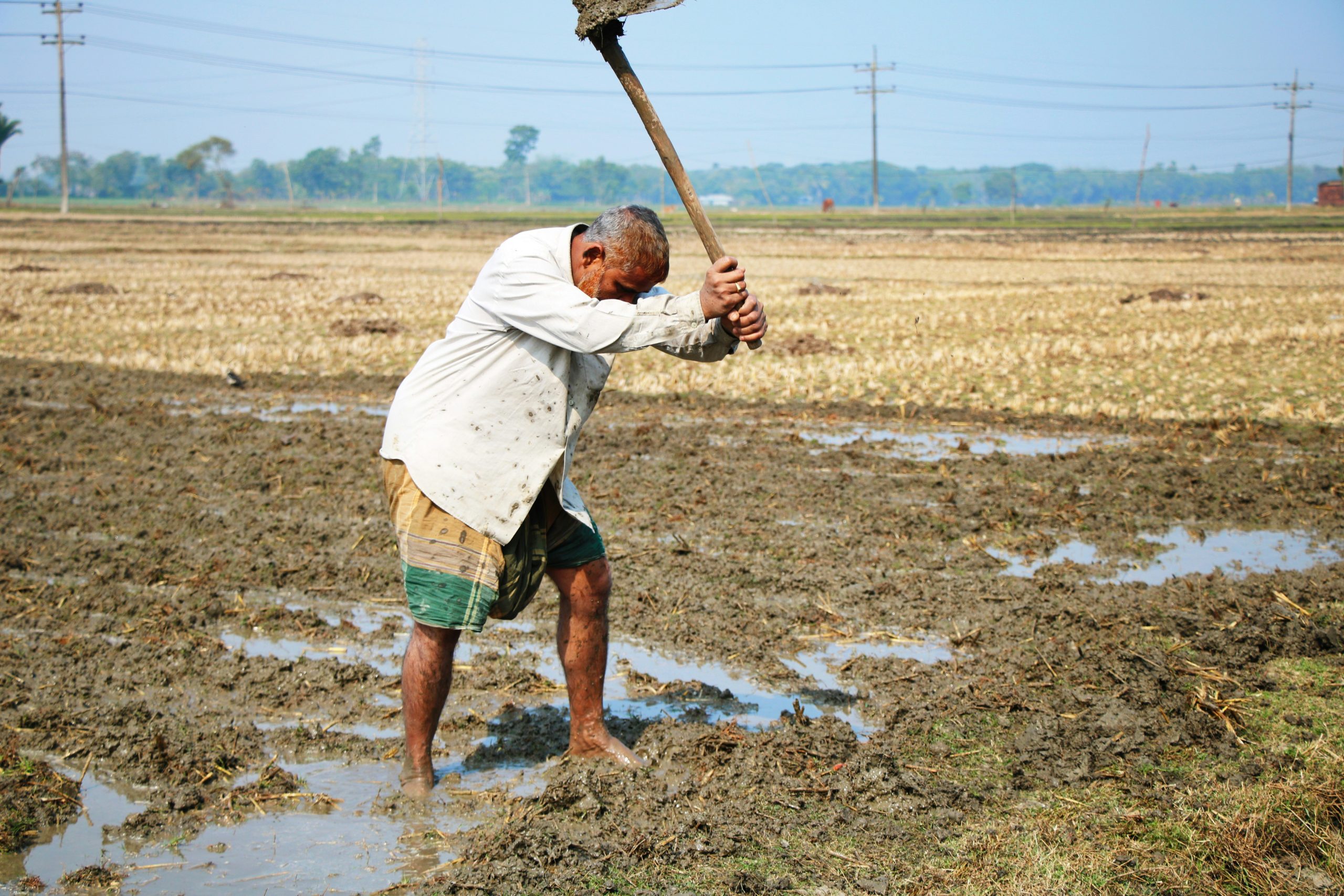In “What Are The Benefits Of Conservation Agriculture?”, we explore the myriad advantages that this sustainable farming practice brings to our environment, economy, and society. Conservation agriculture, with its focus on minimal soil disturbance, permanent soil cover, and diverse crop rotations, offers promising solutions to many of our agricultural challenges. Through this article, we’ll dive into how these practices not only enhance soil health and reduce erosion but also boost yields and farmer resilience, ultimately contributing to a more sustainable and secure food system for all of us. Have you ever wondered about the benefits of conservation agriculture? In recent years, there’s been a growing interest in farming methods that not only boost crop yields but also protect our land and environment. Conservation agriculture is one such approach that focuses on sustainability. Join us as we dive deep into the numerous advantages this agricultural practice brings to our fields and our lives.
Understanding Conservation Agriculture
Before we get into the benefits, it’s important to understand what conservation agriculture actually is. Conservation agriculture is a farming modification that emphasizes sustainability, robustness, and productivity. The cornerstone of this approach lies in three key principles: minimal soil disturbance, permanent soil cover, and crop rotation. By following these principles, farmers can create a more sustainable and resilient agricultural system.
Minimal Soil Disturbance
Minimal soil disturbance involves reducing tillage to maintain soil structure and health. Tilling the soil can disrupt the natural ecosystem, leading to soil erosion and loss of essential nutrients. By minimizing soil disruption, we can encourage the development of healthy soils that are rich in organic matter and beneficial microorganisms.
Permanent Soil Cover
Maintaining a permanent soil cover involves using cover crops and mulch to protect the soil from erosion and degradation. Cover crops, such as legumes and grasses, can be planted during off-seasons to shield the soil from the effects of wind and rain. They also add organic matter to the soil, improving its structure and fertility.
Crop Rotation
Crop rotation is the practice of growing different types of crops in the same area in sequential seasons. By rotating crops, farmers can break pest and disease cycles, improve soil fertility, and reduce the need for chemical inputs. Diverse crop rotations also enhance biodiversity on the farm.
Soil Health Benefits
One of the most notable benefits of conservation agriculture is its positive impact on soil health. Healthy soil is the foundation of successful farming, and by adopting conservation practices, we can ensure our soil remains fertile and productive for generations to come.
Enhanced Soil Structure
Conservation agriculture promotes the development of stable soil aggregates, which are clumps of soil particles that stick together. These aggregates create a porous soil structure that allows for better water infiltration and root penetration. Improved soil structure also reduces the risk of soil erosion, ensuring that topsoil remains in place.
Increased Organic Matter
Organic matter is crucial for soil fertility. It provides essential nutrients for plant growth and supports a diverse community of soil organisms. Conservation practices, such as cover cropping and reduced tillage, help increase organic matter levels in the soil. This not only boosts soil fertility but also enhances its ability to retain water and nutrients.
Improved Soil Biodiversity
A thriving soil ecosystem is essential for healthy plant growth. Conservation agriculture encourages the presence of beneficial microorganisms, such as bacteria, fungi, and earthworms, which play a vital role in nutrient cycling and soil fertility. These organisms help break down organic matter, fix nitrogen, and suppress soil-borne diseases.

Water Conservation
Water is a precious resource, and effective water management is crucial for sustainable farming. Conservation agriculture can help us make the most of our water resources by improving soil moisture retention and reducing the need for irrigation.
Increased Water Infiltration
Improved soil structure, as a result of conservation practices, allows water to infiltrate the soil more effectively. This means that rainwater is absorbed into the ground rather than running off the surface. Enhanced water infiltration reduces the risk of waterlogging and ensures that plants have access to the moisture they need to grow.
Reduced Soil Erosion
Soil erosion is a major threat to agricultural productivity and water quality. By maintaining a permanent soil cover and reducing tillage, we can protect the soil from the erosive forces of wind and rain. This not only preserves valuable topsoil but also prevents sediment and pollutants from entering nearby water bodies.
Efficient Water Use
Conservation agriculture practices can help us use water more efficiently. For example, cover crops can reduce evaporation by shading the soil, while improved soil structure enhances the soil’s ability to retain water. These benefits mean that farmers may need to irrigate less frequently, saving water and reducing production costs.
Economic Benefits
Adopting conservation agriculture can lead to significant economic benefits for farmers. By improving soil health, water management, and crop productivity, we can increase farm profitability and sustainability.
Reduced Input Costs
Conservation agriculture can help farmers reduce their reliance on chemical inputs, such as fertilizers and pesticides. Healthy, biodiverse soils are naturally more fertile and less prone to pest and disease outbreaks, which means that farmers can save money on inputs. Additionally, practices like no-till farming require less fuel and labor, further reducing costs.
Increased Crop Yields
By enhancing soil health and water management, conservation agriculture can lead to higher crop yields. Healthy soils provide plants with the nutrients and moisture they need to grow, resulting in more robust and productive crops. Over time, increased yields can translate into higher profits for farmers.
Long-Term Sustainability
One of the most significant economic benefits of conservation agriculture is its potential to enhance long-term farm sustainability. By protecting and improving the soil, farmers can ensure that their land remains productive for future generations. This long-term perspective can help farmers build resilient agricultural systems that are better able to withstand the impacts of climate change and other challenges.

Environmental Benefits
In addition to its economic advantages, conservation agriculture offers numerous environmental benefits. By adopting sustainable farming practices, we can help protect and preserve our natural resources for future generations.
Reduced Greenhouse Gas Emissions
Agriculture is a major source of greenhouse gas emissions, but conservation practices can help mitigate this impact. For example, no-till farming reduces the release of carbon dioxide from the soil, while cover crops can sequester carbon in their biomass. These practices can help reduce the overall carbon footprint of agriculture.
Enhanced Biodiversity
Conservation agriculture promotes biodiversity both above and below the soil surface. Diverse crop rotations and permanent soil cover provide habitat for a wide range of organisms, from beneficial insects to soil microorganisms. This increased biodiversity can help support ecosystem services, such as pollination and pest control, which are essential for sustainable agriculture.
Improved Water Quality
By reducing soil erosion and the need for chemical inputs, conservation agriculture can help improve water quality. Less sediment and fewer pollutants enter our waterways, leading to cleaner rivers and streams. This benefits not only the environment but also human health and well-being.
Social Benefits
The benefits of conservation agriculture extend beyond the farm gate, offering social advantages for rural communities and society as a whole.
Enhanced Food Security
By improving soil fertility and crop productivity, conservation agriculture can help increase food production. This can contribute to greater food security, particularly in regions where land degradation and resource scarcity are major concerns. More reliable crop yields mean that communities are less vulnerable to food shortages and price fluctuations.
Empowerment of Farmers
Conservation agriculture can empower farmers by providing them with knowledge and skills to manage their land more sustainably. Through training and education, farmers can learn about the benefits of conservation practices and how to implement them effectively. This empowerment can lead to greater self-reliance and resilience in the face of challenges.
Job Creation
The adoption of conservation agriculture can create new job opportunities in rural areas. For example, the production and management of cover crops may require additional labor, while the implementation of conservation practices can spur the development of new services and markets. These jobs can help support rural economies and improve livelihoods.

Challenges and Opportunities
While the benefits of conservation agriculture are clear, there are also challenges to its widespread adoption. Understanding these challenges and exploring potential solutions can help us overcome barriers and promote the uptake of sustainable farming practices.
Initial Investment and Transition Costs
One of the main challenges farmers face when adopting conservation agriculture is the initial investment and transition costs. Implementing new practices may require purchasing specialized equipment, such as no-till planters or roller crimpers for cover crops. Additionally, there may be a learning curve as farmers adjust to new methods.
Addressing Knowledge Gaps
Education and training are essential for the successful implementation of conservation agriculture. Farmers need access to accurate information and guidance on how to adopt and manage conservation practices. Extension services, farmer networks, and demonstration projects can play a crucial role in addressing knowledge gaps and promoting the adoption of sustainable agriculture.
Policy Support and Incentives
Government policies and incentives can help facilitate the transition to conservation agriculture. Financial support, such as grants and subsidies, can help offset the initial costs of adopting new practices. Additionally, policies that promote research and development, extension services, and market access can create a favorable environment for conservation agriculture.
Success Stories: Real-World Examples of Conservation Agriculture
To better understand the impact of conservation agriculture, let’s explore some real-world success stories from around the globe. These case studies highlight the diverse ways in which conservation practices are being implemented and the benefits they bring to farmers and communities.
Case Study 1: Zero Tillage in Argentina
In Argentina, the widespread adoption of zero tillage has brought significant benefits to farmers. By eliminating traditional plowing, farmers have been able to reduce soil erosion, improve soil health, and increase crop yields. Zero tillage has also helped farmers save on fuel and labor costs, contributing to greater profitability.
Case Study 2: Cover Cropping in the United States
In the United States, cover cropping has gained popularity as a means of improving soil health and reducing the need for chemical inputs. Farmers who use cover crops, such as clover and rye, have reported increased soil organic matter, better water retention, and reduced weed pressure. These benefits have led to higher crop yields and reduced production costs.
Case Study 3: Crop Rotation in Kenya
In Kenya, smallholder farmers have embraced crop rotation as a strategy to enhance soil fertility and reduce pest and disease outbreaks. By rotating crops like maize, beans, and groundnuts, farmers have been able to break pest cycles and improve nutrient availability in the soil. This has resulted in more resilient farming systems and increased food security for rural communities.

Conclusion: Embracing Conservation Agriculture for a Sustainable Future
As we’ve explored, the benefits of conservation agriculture are vast and multifaceted. From improved soil health and water conservation to economic and environmental advantages, adopting these sustainable practices can lead to more resilient and productive agricultural systems. While there are challenges to overcome, the success stories from around the world demonstrate that conservation agriculture is a viable and effective approach to farming.
By embracing conservation agriculture, we can protect our natural resources, support rural communities, and ensure a sustainable food supply for future generations. Let’s work together to promote and implement these practices, paving the way for a more sustainable and prosperous future in agriculture.



